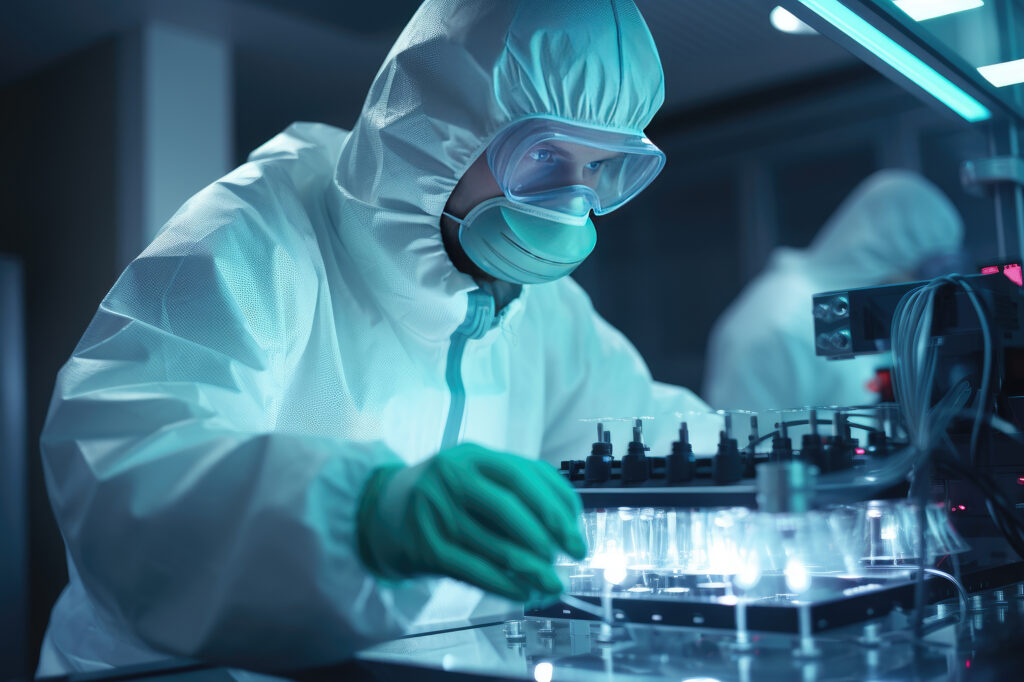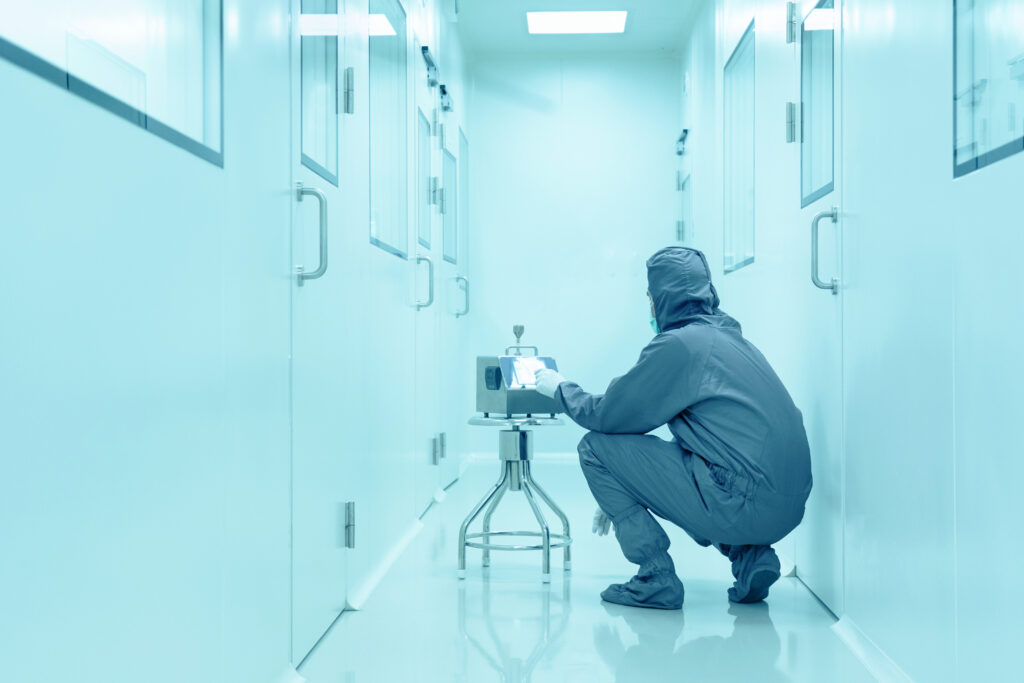Laboratory Temperature & Humidity Monitoring
Today, I’m taking you to a deserted island where it’s hot and humid to get a little cocktail and to perfect your summer tan while listening to the pampas’ sombreros music. Just kidding! I’m taking you to a much more heavenly place – a laboratory!
Imagine a laboratory where environmental monitoring allows instant detection of an anomaly in the temperature of a freezing cold room. Pretty cool, right? Well, with Mirrhia, it’s possible because Mirrhia offers you the solution for cutting-edge monitoring of your laboratories, allowing you to instantly detect any anomaly and react promptly.
Indeed, whether it’s in the pharmaceutical industry, the agri-food sector, scientific research, medical environments, or laboratories, even the slightest variations can have disastrous or catastrophic consequences on the quality of products or samples, the safety of people, or the performance of facilities.
1. The Importance of Laboratory Monitoring
Laboratory monitoring is a continuous process of data collection and analysis aimed at ensuring that environmental conditions are maintained. By relying on robust monitoring technologies and solutions such as Mirrhia, laboratories can ensure compliance with regulatory requirements and, in some cases, protect patient health (particularly in pharmaceutical laboratories).
Environmental Conditions
Temperature
As you may have guessed, we’re not in Bali but rather in your laboratory. In a lab, we monitor the temperature of refrigerators, freezers, ultra-freezers (where it’s extremely cold), incubators (which are usually quite warm), and other equipment to ensure, for example, the preservation of products or samples.
Humidity
Monitoring humidity in a lab is more about preventing contamination and microbial growth. Why? Well, because humidity is a significant factor in the growth of microorganisms such as bacteria, yeasts, and molds, which are sources of contamination.
Additionally, I can mention particle monitoring. Monitoring levels of particles in the air ensures the cleanliness of laboratory environments. And I would add microbiology. Analyzing surfaces and air detects the presence or absence of microorganisms that could contaminate products.
Equipment
Probes and Sensors
Probes and sensors are essential instruments for environmental monitoring. They allow the measurement of various environmental parameters such as temperature, humidity, particles, and other pollutants. There is a wide range of probes and sensors available on the market, each with its own characteristics and advantages. The choice of the most suitable probe or sensor depends on several factors, such as:
- The parameter to be measured
- The measurement range
- Accuracy and reliability
- Cost
- Conditions of use
Examples:
PT100 Temperature Probes
- Parameter to measure: Temperature
- Measurement range: -50°C to +150°C
- Accuracy and reliability: ±0.2°C
- Cost: €50 to €500
- Conditions of use: Indoor and outdoor
DHT22 Humidity Sensor
- Parameter to measure: Humidity
- Measurement range: 0% to 100% relative humidity
- Accuracy and reliability: ±2% relative humidity
- Cost: Variable, typically between €5 and €20
- Conditions of use: Suitable for indoor and outdoor use
The Software
Therefore, a laboratory is an environment where temperature and humidity can affect the quality of research, sample or product safety, and people’s health. A temperature and humidity monitoring software (such as Mirrhia, haha) is thus an essential tool. But why?
1. The Laboratory: A Environment Sensitive to Variations
Temperature and humidity in your lab can influence many aspects:
- Research quality: Even slight variations can affect chemical reactions, cell culture growth, reagent stability, and instrument precision.
- Sample and product safety: Temperature and humidity can alter the properties of biological samples, pharmaceuticals, and sensitive cultures.
- People’s health: An uncontrolled lab environment with chemical handling can cause discomfort, stress, and respiratory illnesses.
2. Software as a Proactive Monitoring Solution
A temperature and humidity monitoring software is essential to ensure an optimal laboratory environment.
It allows:
- Precise and reliable data collection: By real-time measurement of temperature and humidity at different points in the laboratory, continuous recording of data over a defined period, and secure storage of collected data.
- Data analysis to identify trends and anomalies: By detecting critical variations, identifying risk areas, evaluating the impact of variations on research and products, and anticipating potential problems through corrective measures.
- Clear and intuitive data visualization: Through graphs and dashboards for easy data understanding, real-time monitoring of environmental conditions, and rapid identification of critical threshold exceedances.
- User alerts in case of problems: Via email, SMS, or audible alarm notifications, with custom alert thresholds for each laboratory zone, facilitating quick intervention to minimize negative impacts.
3. Advanced Features for Optimal Management
Environmental monitoring software allows you to generate automatic and customizable reports, facilitating data analysis and result communication. You can export data to different formats for in-depth analysis in statistical or data management software.
Multi-user management and access rights ensure data security and confidentiality.
Integration with other laboratory systems enables data centralization and better coordination of activities. And that’s beautiful!
2. Monitoring of your Laboratory – What’s in there for you !
Monitoring in a Research or Analysis Laboratory
Obviously, a research or analysis laboratory will not be subject to the same regulatory criteria as a pharmaceutical lab, as you can imagine! However, environmental monitoring still holds significance…
Here’s what it can contribute to:
Sample Stability
- Biological, chemical, and other samples used in research or analysis can be sensitive to environmental conditions such as temperature and humidity.
- Inappropriate temperature or humidity can alter the structure or composition of samples, which would skew the results of experiments or analyses.
- By continuously monitoring environmental conditions, we can ensure that samples are stored in optimal conditions, thereby preserving their integrity and the validity of the data obtained from them.
Instrument Reliability
- Many laboratory instruments, such as spectrophotometers (that one’s really not easy to pronounce, I agree), chromatographs, and balances, are sensitive to temperature and humidity variations.
- Fluctuating environmental conditions can affect the accuracy and stability of these instruments, thereby compromising the reliability of the results obtained.
- By continuously monitoring the environmental parameters around the instruments in real-time, we can detect variations and deviations, enabling corrective measures to maintain optimal operating conditions.
Reproducibility of Experiments
- Reproducibility (not an easy one either) of experiments is essential in scientific research to validate results and ensure their credibility.
- Environmental conditions, such as temperature and humidity, can impact experimental results, even minimally.
- By actively monitoring and controlling these conditions, we can ensure that experiments can be replicated under identical conditions, thereby strengthening the robustness of the scientific conclusions drawn from the research. It all makes sense, doesn’t it?
Monitoring in a Pharmaceutical Laboratory
Ensuring the safety of pharmaceutical products in a pharmaceutical laboratory is an absolute priority, and this involves implementing rigorous measures to detect and correct deviations at all stages of a product’s lifecycle, from research and development to production and distribution.
So, in this case, we tighten the screws a bit more for a very specific purpose, which is patient protection.
Prevention of Contamination
- Environmental conditions such as temperature and humidity can influence the proliferation of microorganisms and contaminants in pharmaceutical products. And we definitely don’t want microorganism proliferation!
- Contaminations can compromise the quality and safety of products, leading to health risks for patients and significant costs for manufacturers. We don’t want that either!
- By actively monitoring environmental conditions and quickly detecting deviations, we can implement control and prevention measures to reduce the risks of contamination and ensure the quality and safety of pharmaceutical products (Thanks to Mirrhia).
Storage of Pharmaceutical Products
- Medicines and biological products must be stored under specific temperature and humidity conditions to ensure their effectiveness and safety. Monitoring ensures that products are stored in conditions compliant with regulations.
- Inadequate storage conditions can alter the stability and effectiveness of products, even compromising their safety and regulatory compliance.
- By proactively monitoring environmental conditions in storage areas, we can ensure that products are stored under optimal conditions, compliant with regulatory requirements and manufacturer specifications.
Well, you’ve got it! Even if we’re not in Bali, with Mirrhia, you’ll feel on top of your game in your lab, that’s for sure!
A question on Temperature & Humidity Monitoring in your lab?
Don’t hesitate to contact us now. Send us a message and we’ll get back to you shortly.

Arrival of Etienne Van den Bogaert as Managing Director

Mirrhia 2.4 is coming

Data Integrity in The Pharmaceutical Industry

Laborama 2024

Particle Counters | Case Studies & EMS in Pharma

Particle Counting for Pharma

Particle Counting – Quality and Compliance

Particle Counters and Environmental Monitoring
